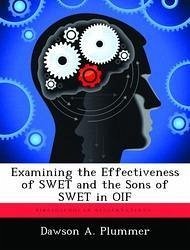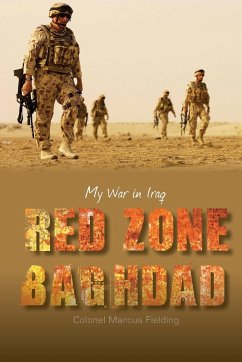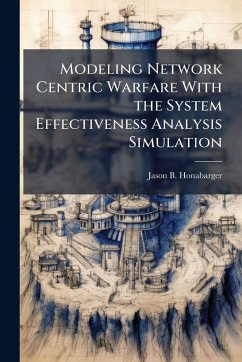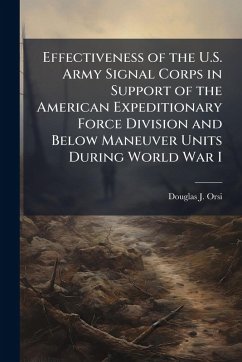
Examining the Effectiveness of SWET and the Sons of SWET in OIF
Versandkostenfrei!
Versandfertig in über 4 Wochen
15,99 €
inkl. MwSt.

PAYBACK Punkte
8 °P sammeln!
After the United States (U.S.) Coalition forces invaded Iraq, the transition to stability operations has been difficult for the U.S. Coalition forces. One method used by the 1st Cavalry Division, in 2004, was to develop logical lines of operations that provided units with methods and guidance to accomplish key tasks in the stability operations phase. Under the essential services line of operations a concept that was implemented to help win the hearts and minds of the local Iraqi population was the sewage, water, electricity, and trash program also known as SWET. SWET became known as the primar...
After the United States (U.S.) Coalition forces invaded Iraq, the transition to stability operations has been difficult for the U.S. Coalition forces. One method used by the 1st Cavalry Division, in 2004, was to develop logical lines of operations that provided units with methods and guidance to accomplish key tasks in the stability operations phase. Under the essential services line of operations a concept that was implemented to help win the hearts and minds of the local Iraqi population was the sewage, water, electricity, and trash program also known as SWET. SWET became known as the primary focus for not only rebuilding and improving key infrastructure, but was perceived as the solution to winning the peace in Iraq. The SWET metrics program was adopted by follow-on units and executed all over Iraq. The SWET metrics were constantly monitored by higher headquarters and were even utilized to predict the level of pacification and acceptance of the local population. The purpose of this monograph is to determine how effective SWET was when being utilized during counterinsurgency operations in Iraq. This will be accomplished by conducting a historical comparison with a similar infrastructure rebuilding program in Vietnam, examining the different modifications made to SWET by follow-on units, and identifying the Iraqi local population opinions within each province concerning how they were affected by the U.S. Coalition forces execution of full spectrum operations. This monograph will prove that the SWET concept alone is not the ideal frame work for all of Iraq. In addition, SWET and the sons of SWET concepts are not enough to determine stability, dislodge insurgents from a population, address the underlying causes of an insurgency, or win the support of a local population. Finally, SWET is a concept which must be used with other counterinsurgency doctrine in order to win over the local population. This work has been selected by scholars as being culturally important, and is part of the knowledge base of civilization as we know it. This work was reproduced from the original artifact, and remains as true to the original work as possible. Therefore, you will see the original copyright references, library stamps (as most of these works have been housed in our most important libraries around the world), and other notations in the work. This work is in the public domain in the United States of America, and possibly other nations. Within the United States, you may freely copy and distribute this work, as no entity (individual or corporate) has a copyright on the body of the work. As a reproduction of a historical artifact, this work may contain missing or blurred pages, poor pictures, errant marks, etc. Scholars believe, and we concur, that this work is important enough to be preserved, reproduced, and made generally available to the public. We appreciate your support of the preservation process, and thank you for being an important part of keeping this knowledge alive and relevant.












